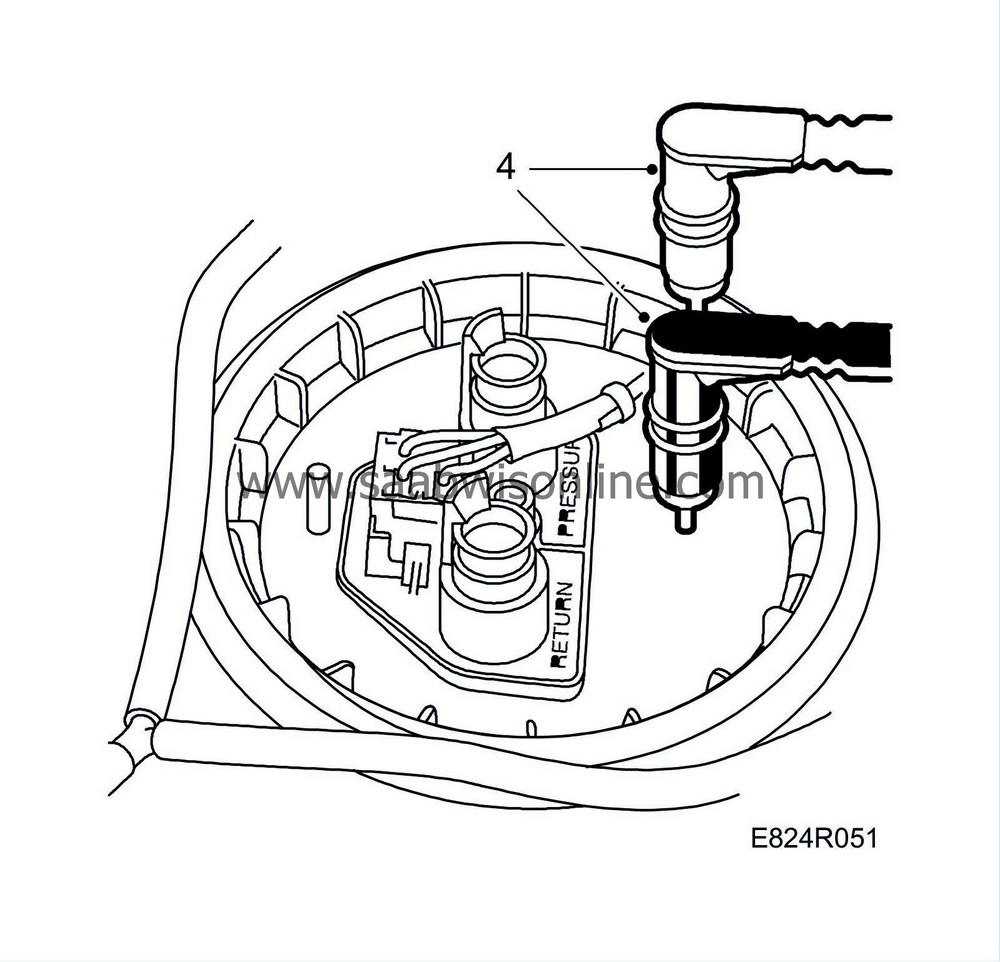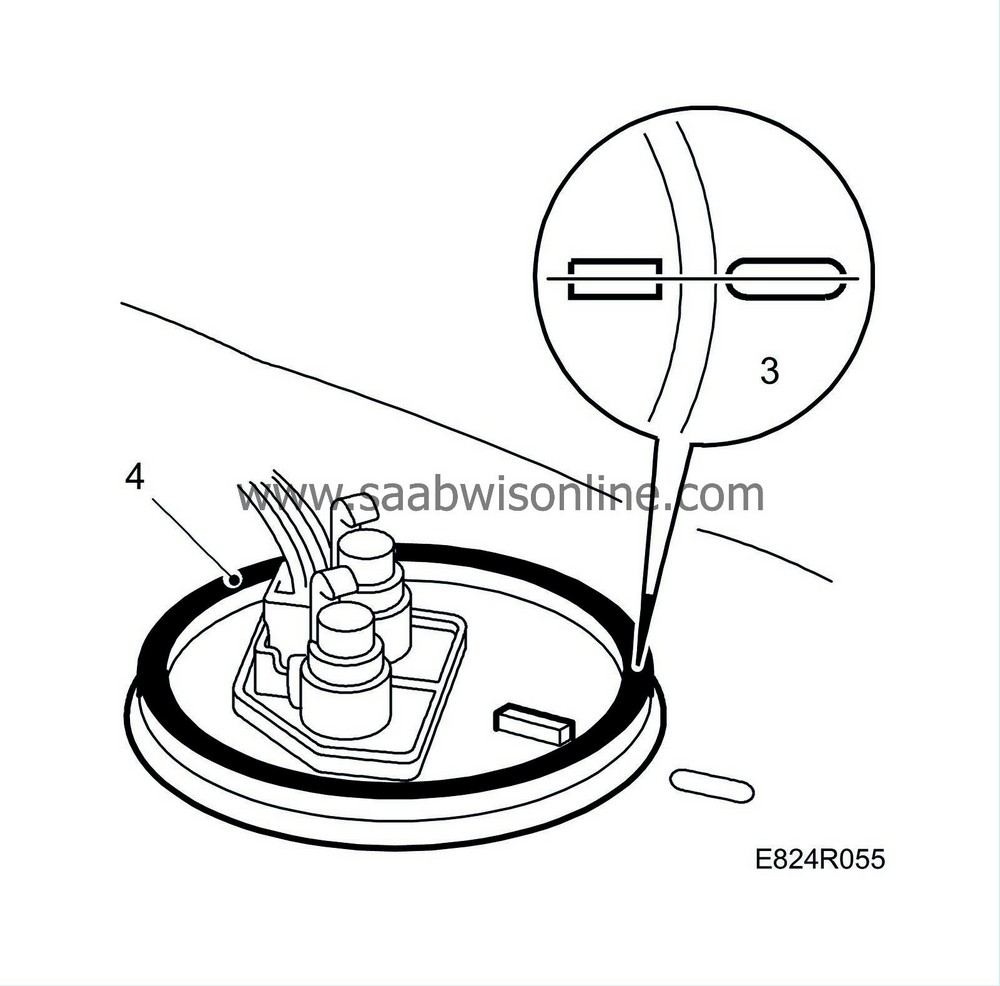Fuel pump
| Fuel pump |
|
||||||||||||||||||||||
| To remove |
| Important | ||
|
The car should be parked on a level surface. If the tank is full and the car is jacked up at the rear when the pump is removed, it is very likely that fuel will run out. |
||
|
Place protective paper over the carpeting when the pump is removed as there is a risk of fuel spilling out. |
||
| 1. |
Raise the rear seat cushions and fold the carpeting out of the way.
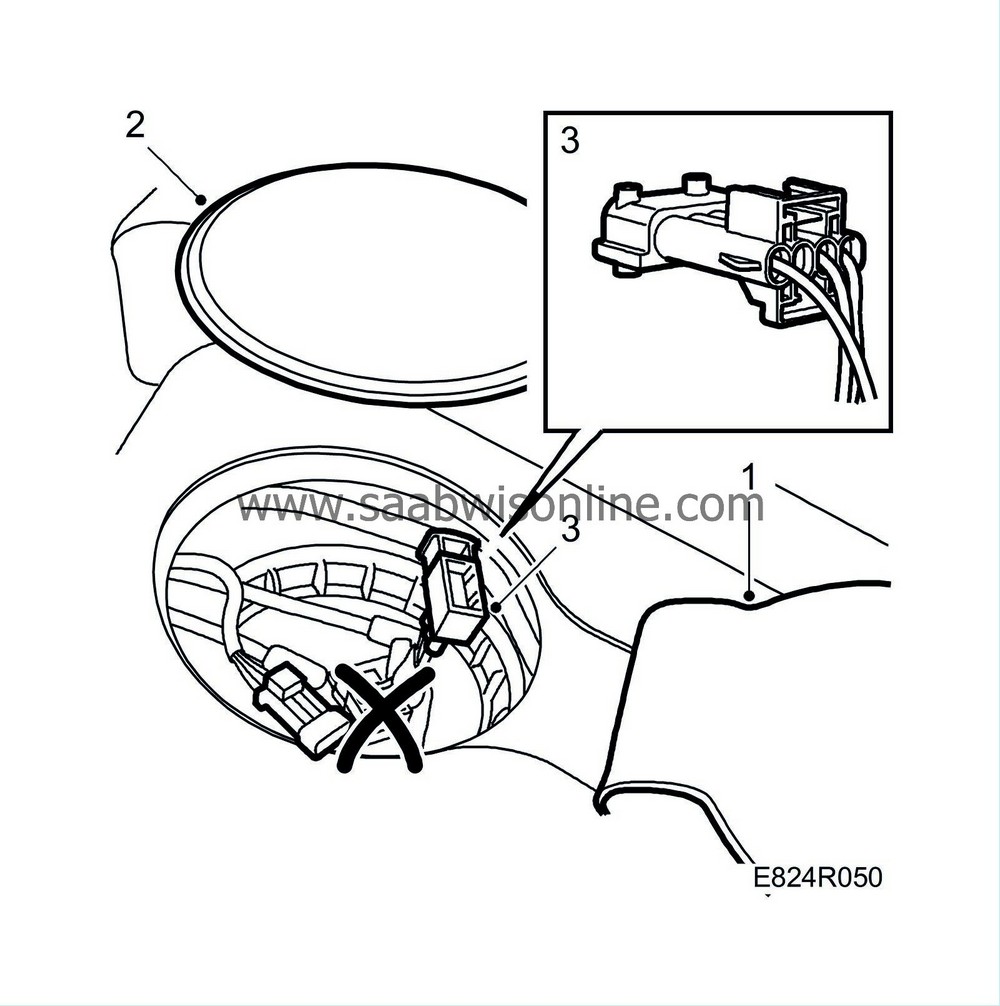
|
|
| 2. |
Remove the fuel pump cover.
|
|
| 3. |
Unplug the upper connector.
|
||||||||||
| 5. |
Remove the screw ring, using special tool 83 94 462.
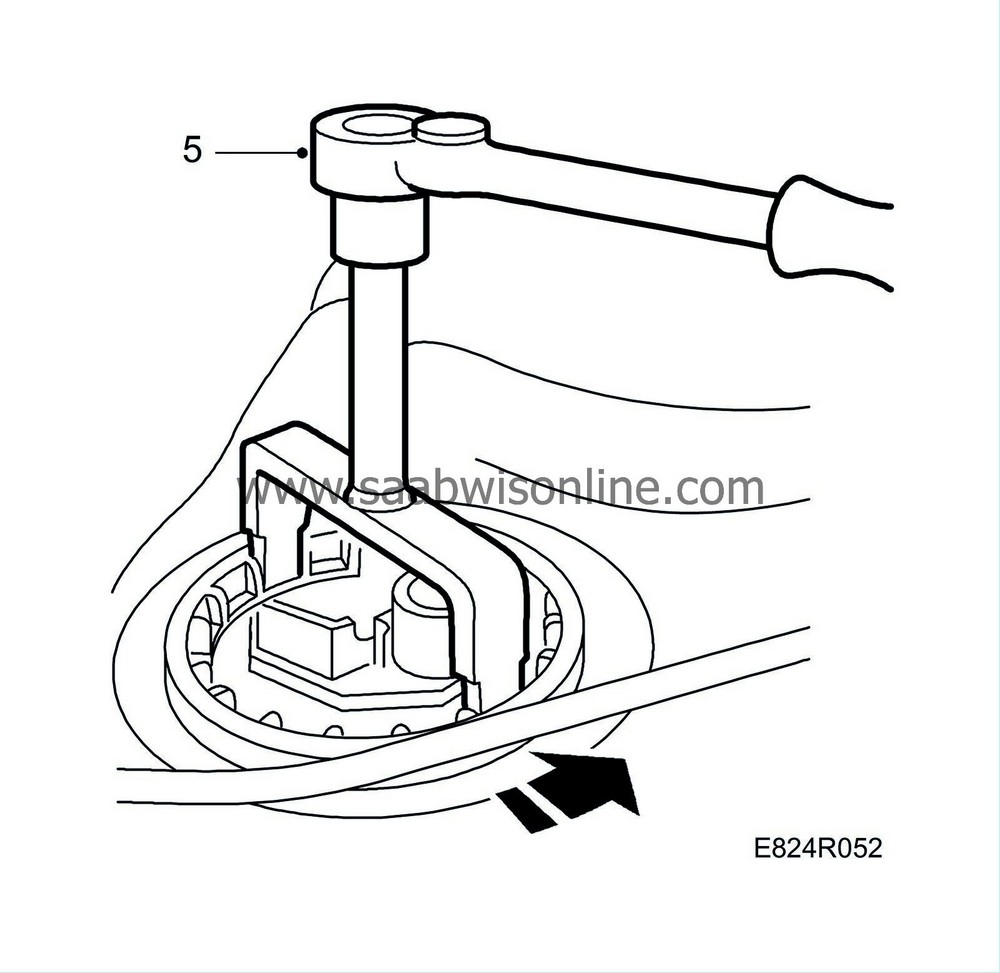
|
|
| 7. |
Transfer the pump to a suitable receptacle and pour off the fuel.
|
|
| To fit |
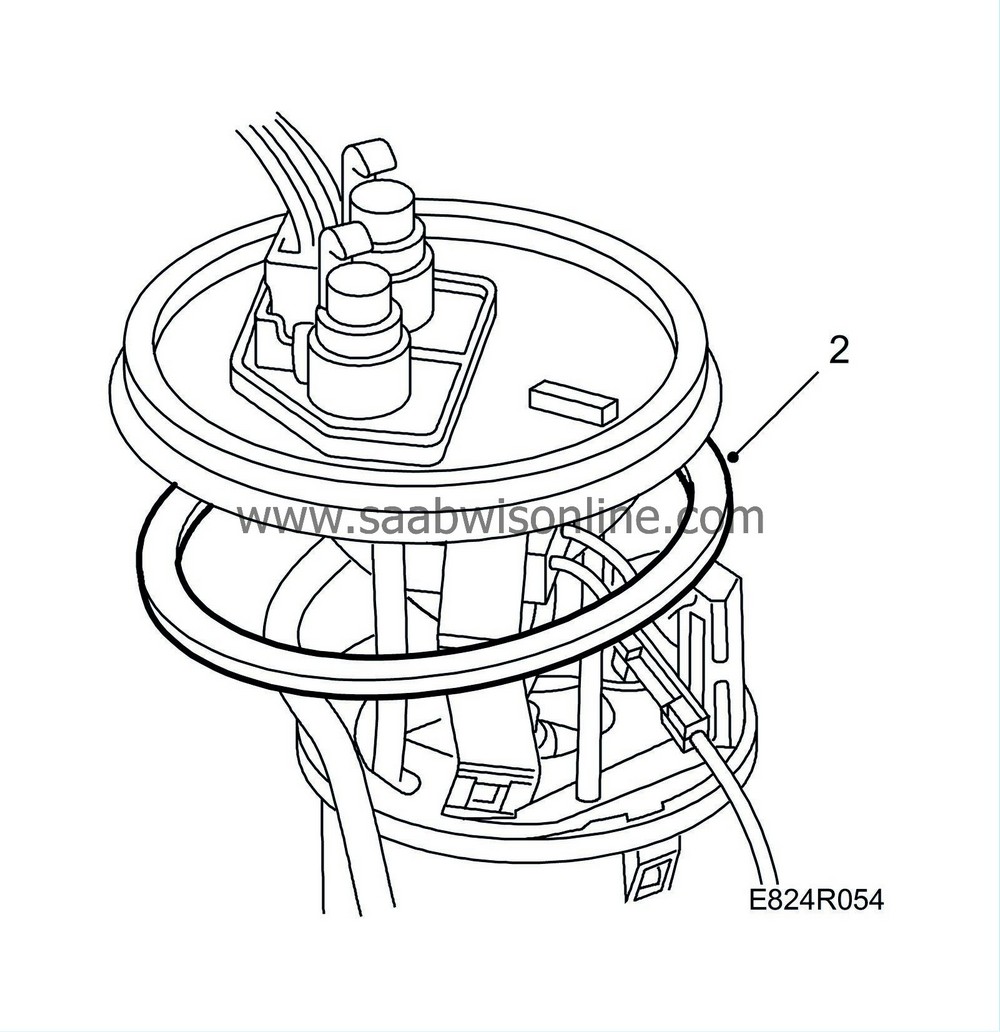
| 1. |
Clean sealing surfaces.
|
|
| 2. |
Fit a new O-ring in the groove in the tank.
|
|
| 4. |
Lubricate the threads on the pump lid and the top of the pump with non-acidic vaseline to prevent the pump from turning when the screw ring is tightened.
|
|
| 5. |
Fit the screw ring and tighten it, using tool 83 94 462.
Tightening torque: 75 Nm (55 lbf ft). |
|
| 6. |
Inspect and lubricate the O-rings on the fuel line connections with non-acidic vaseline and connect them to the pump.
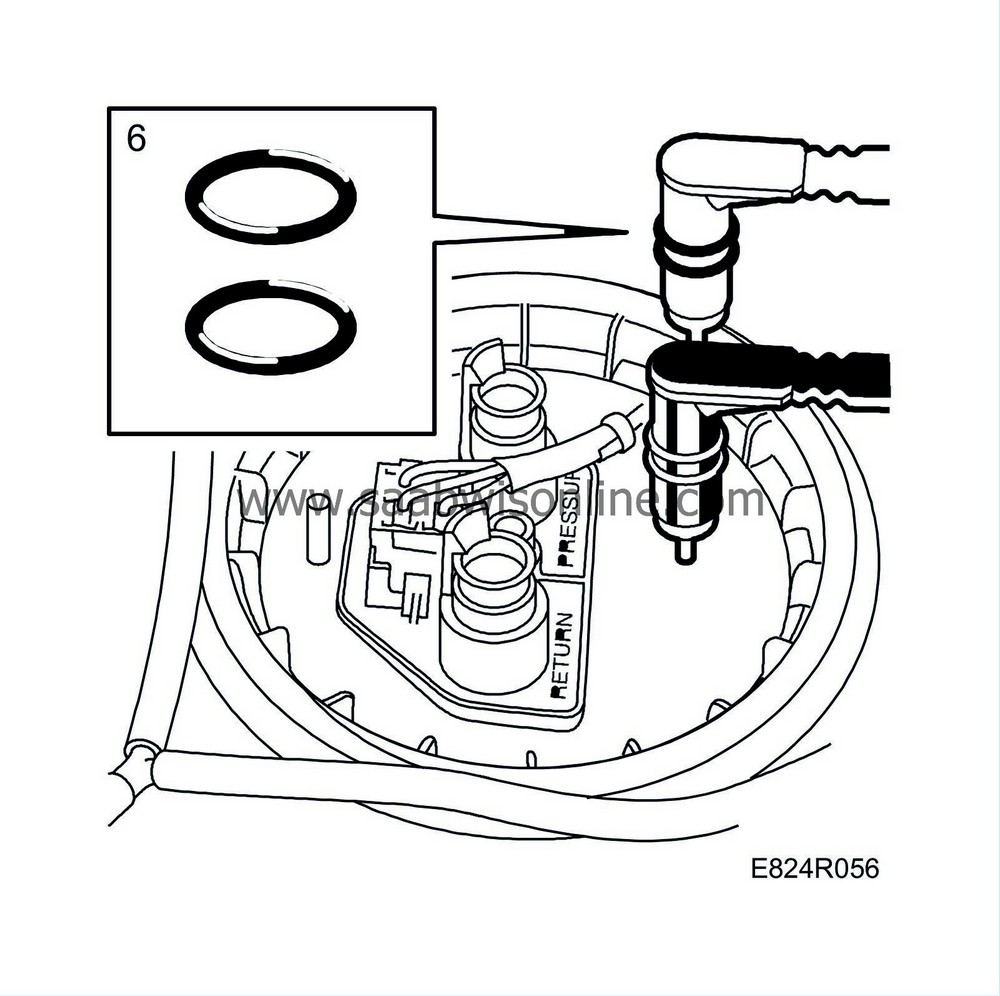
|
|
| 7. |
Make sure that the yellow hooks have snapped in place over the connections.
|
|
| 8. |
Plug in the connector and spray it with a contact cleaner like Kontakt 61 (part No. 30 04 520).
|
|
| 9. |
Check that the pump works properly and that it does not leak.
|
|
| 10. |
Fit the fuel pump cover, return the rear seat cushions to their places and fold back the carpeting.
|
|
| Checking the fuel gauge float arm position |
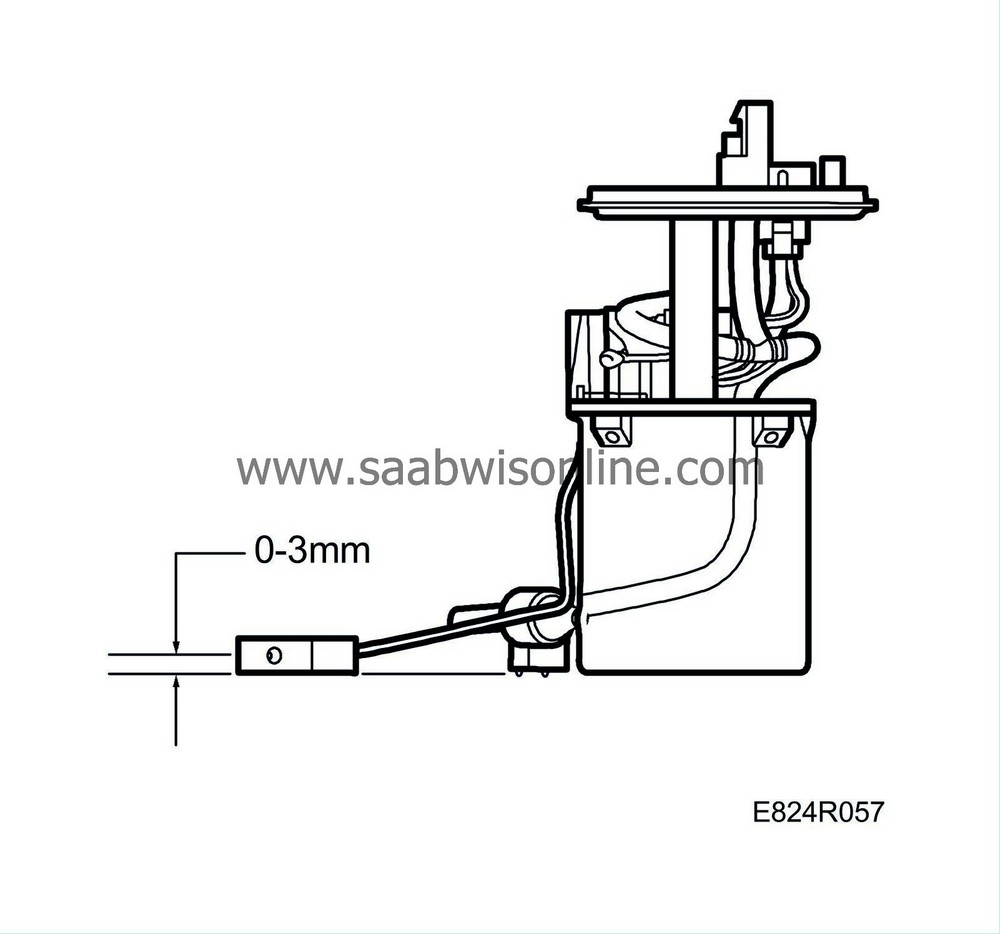
With the pump placed on a level surface, the distance between the surface and the bottom of the float should be 0-3 mm.
The sensor resistance should be:
Empty tank, float at bottom: 50 ± 1.5 ohm
Full tank, float at top: 425 ± 6.5 ohm

 Warning
Warning
